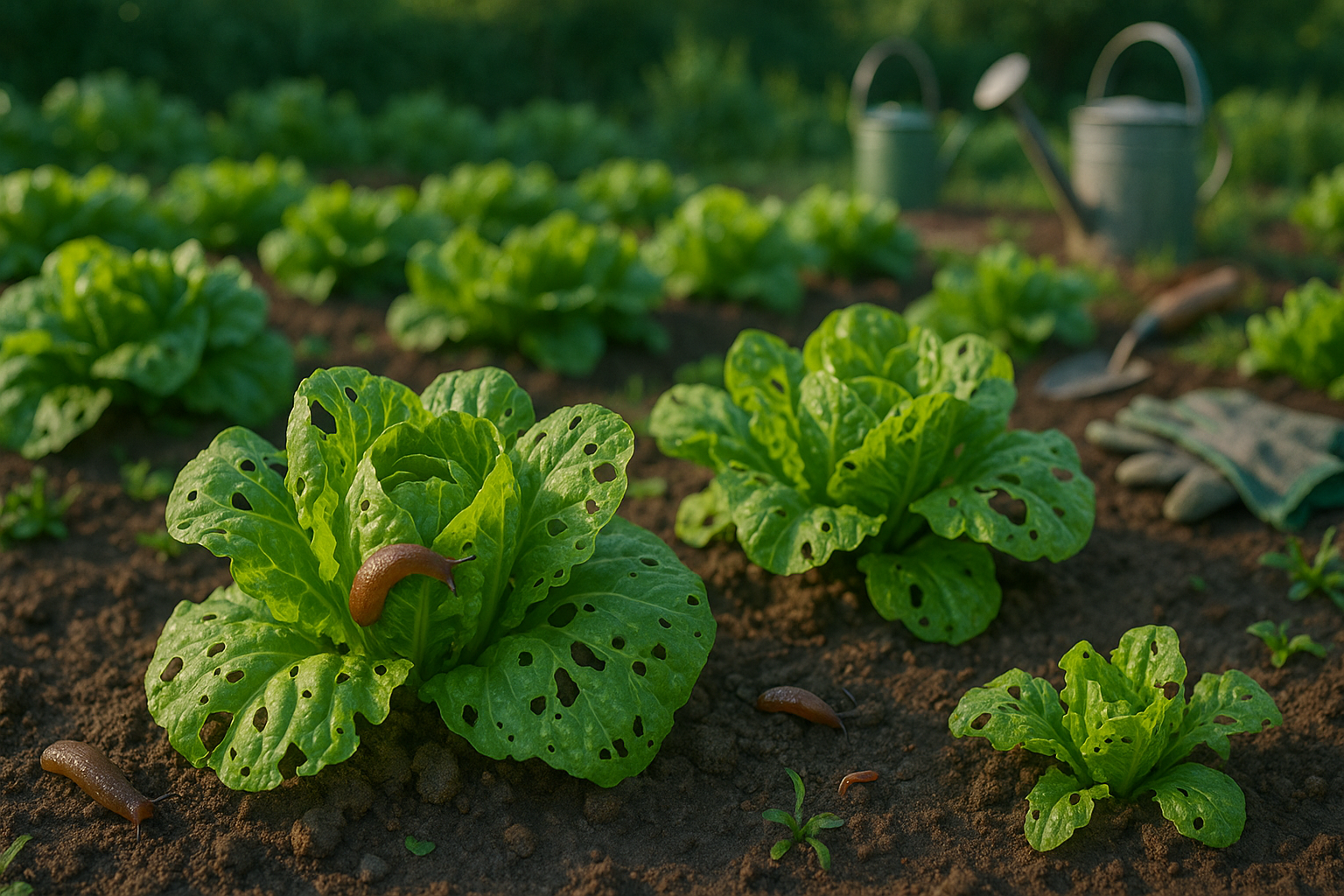Understanding Slug Problems in Lettuce Beds
Lettuce beds often fall victim to slug infestations because lettuce has soft, tender leaves and stays moist, especially after watering or rain—conditions slugs love. Unlike tougher plants like tomatoes or cucumbers, lettuce offers minimal barriers to hungry slugs, making it an easy target for these persistent pests.
The most common signs of slug damage include irregular holes in the leaves, often accompanied by slimy trails left behind. While caterpillars or beetles can also create holes, only slugs and snails leave that telltale silvery slime on or near the chewed areas. You might also notice shredded leaf edges and seedlings eaten down to the stem.
Slugs are nocturnal creatures, so their damage usually occurs overnight or during cloudy days when it’s cool and damp. If you venture out early in the morning or after sunset, you might catch them in action. These pests are especially problematic during spring and fall when rainfall increases and temperatures are mild.
To quickly spot a slug problem, check lettuce beds at dawn or dusk for active slugs and fresh slime trails. Catching the issue early is key to saving your crop.
Natural Barriers That Deter Slugs
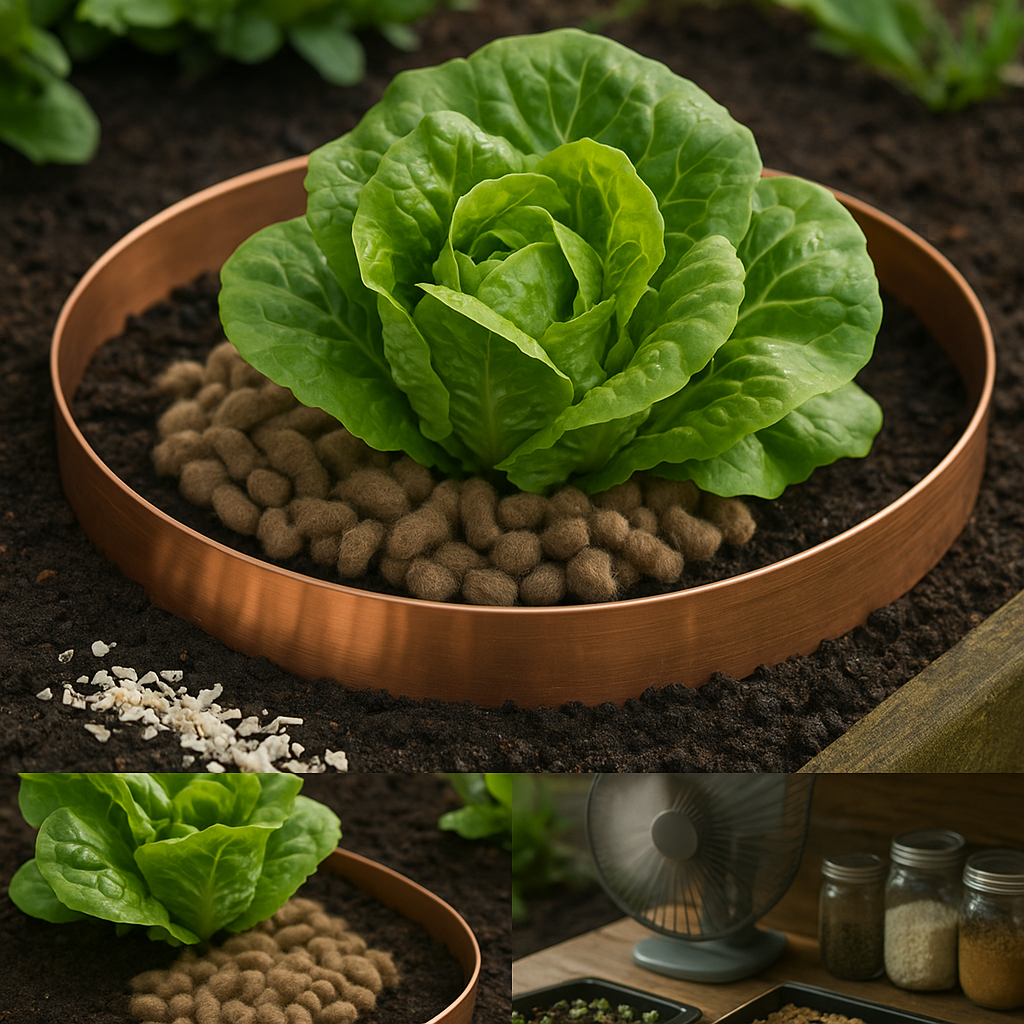
Natural barriers can be a game-changer when protecting lettuce beds from slugs. Copper strips, for example, create a mild electric charge that slugs dislike, preventing them from crossing the barrier. To use them effectively, install the strips in a continuous ring around the bed, ensuring there are no gaps for slugs to sneak through.
Wool pellets are another natural option. When spread in a thick layer, they irritate slugs’ soft bodies and also help retain moisture in the soil. For best results, replenish wool pellets after heavy rain.
Both of these barriers are eco-friendly: copper lasts for years but has a higher upfront cost, while wool pellets are more affordable but require regular topping up. Other barriers, like crushed eggshells or coarse sand, are cheap and biodegradable but may be less reliable after rain or watering.
One universal tip is to keep lettuce beds tidy by removing old leaves, weeds, and debris where slugs can hide. A clean bed makes natural barriers much more effective since there are fewer places for pests to lurk and launch their attacks.
With consistent effort and the right barrier choice, you can reduce slug damage with minimal environmental impact.
Organic Slug Traps and Repellents
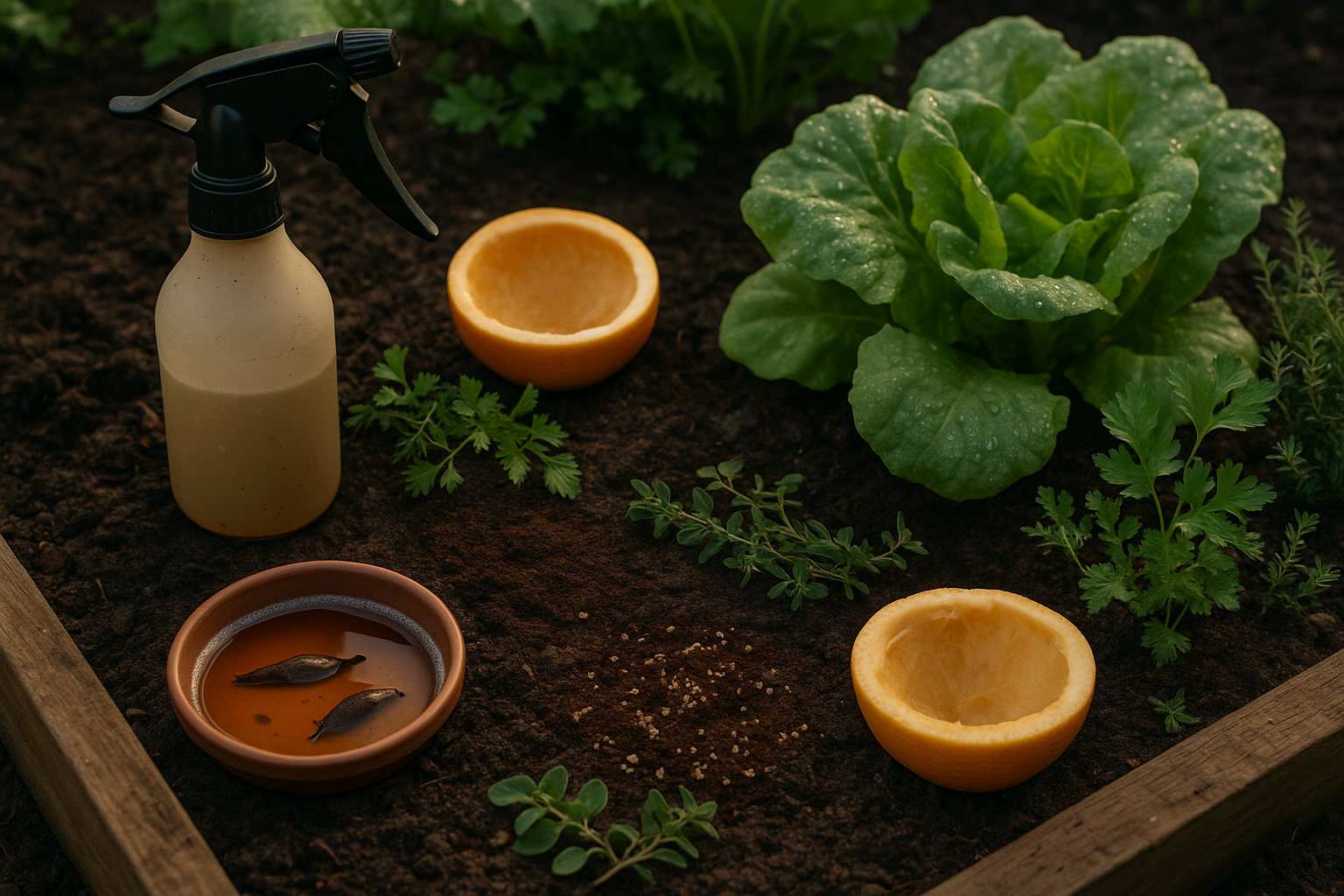
One of the simplest ways to manage slugs organically is by setting up traps right in your garden. Beer traps are a popular and effective option—just bury a shallow container or cup so its rim is level with the soil, then fill it with beer. Slugs are attracted to the smell, fall in, and can’t escape. Check these traps every morning, empty out any slugs you find, and refresh the beer as needed.
Another easy trap is a half grapefruit or orange—cut in half and scooped out, then placed open-side down in the garden overnight. Slugs flock inside to shelter, and you can collect them in the morning. Placing flat boards on damp soil overnight also creates slug “shelters” you can check and clear daily.
For repellents, try a homemade garlic spray: crush a few cloves, steep them in water overnight, then strain and spray on vulnerable plants. Slugs dislike the strong scent. Sprinkling used coffee grounds around plants adds a protective, gritty barrier and boosts soil health.
Remember to reapply repellents after rain and check traps daily for the best results.
Encouraging Natural Predators
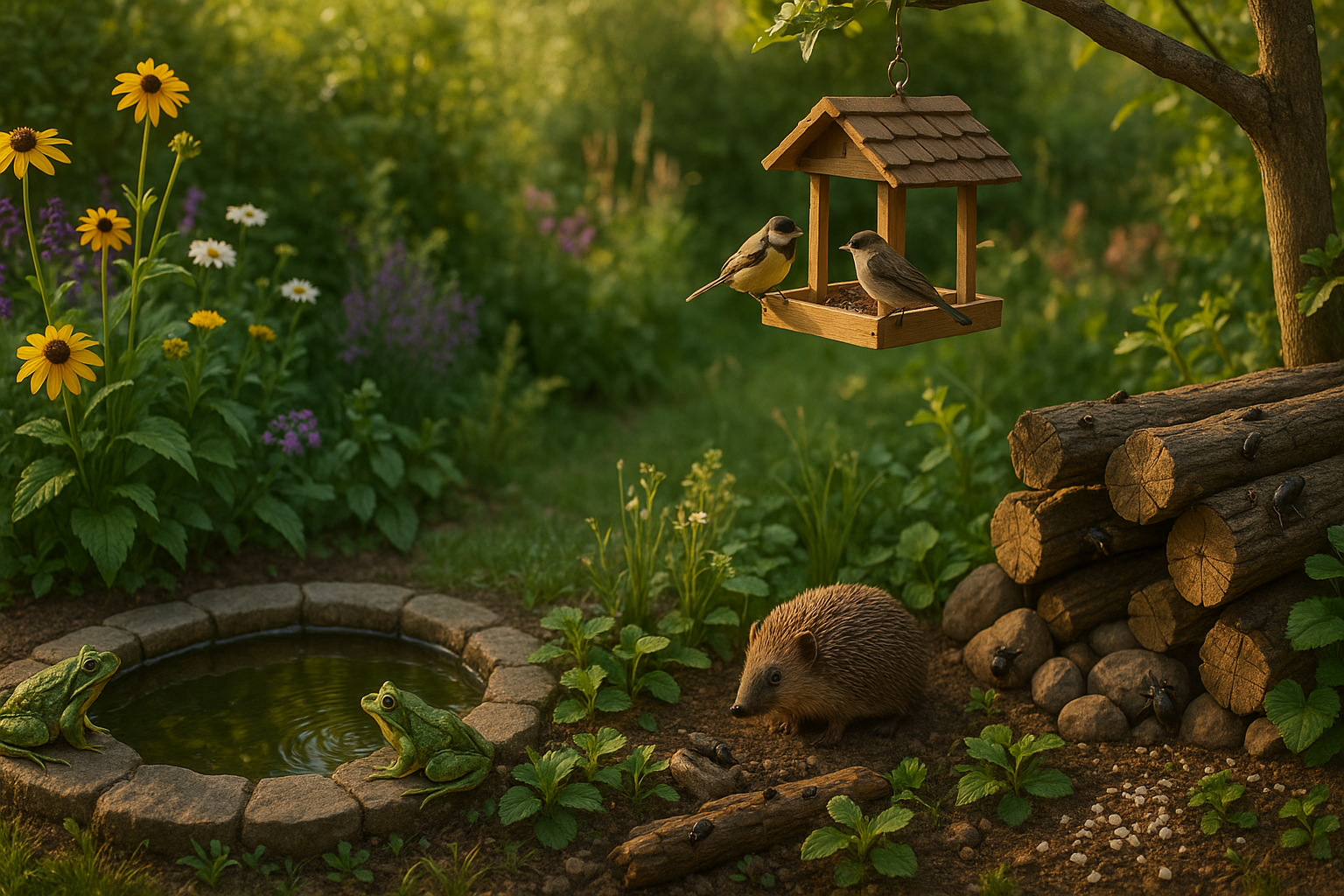
One of the most effective and eco-friendly ways to control slugs in your garden is by encouraging their natural predators. Beneficial creatures like ground beetles, birds, frogs, and even hedgehogs love to feast on slugs and can significantly reduce their numbers without the need for chemicals.
You can attract these helpful allies with simple garden features:
- Create small ponds to invite frogs.
- Build log piles or stone heaps where beetles and hedgehogs can shelter.
- Set up bird feeders or birdbaths to bring more feathered visitors.
Plants like shrubs or native flowering plants also offer shelter for many of these animals.
To keep your garden balanced, avoid using pesticides and slug pellets, as these can harm both pests and their predators. Instead, focus on creating a diverse habitat with food, water, and shelter so beneficial creatures can thrive.
This approach not only reduces slug problems but also supports a healthier, more resilient ecosystem in your garden.
Slug-Resistant Gardening Techniques
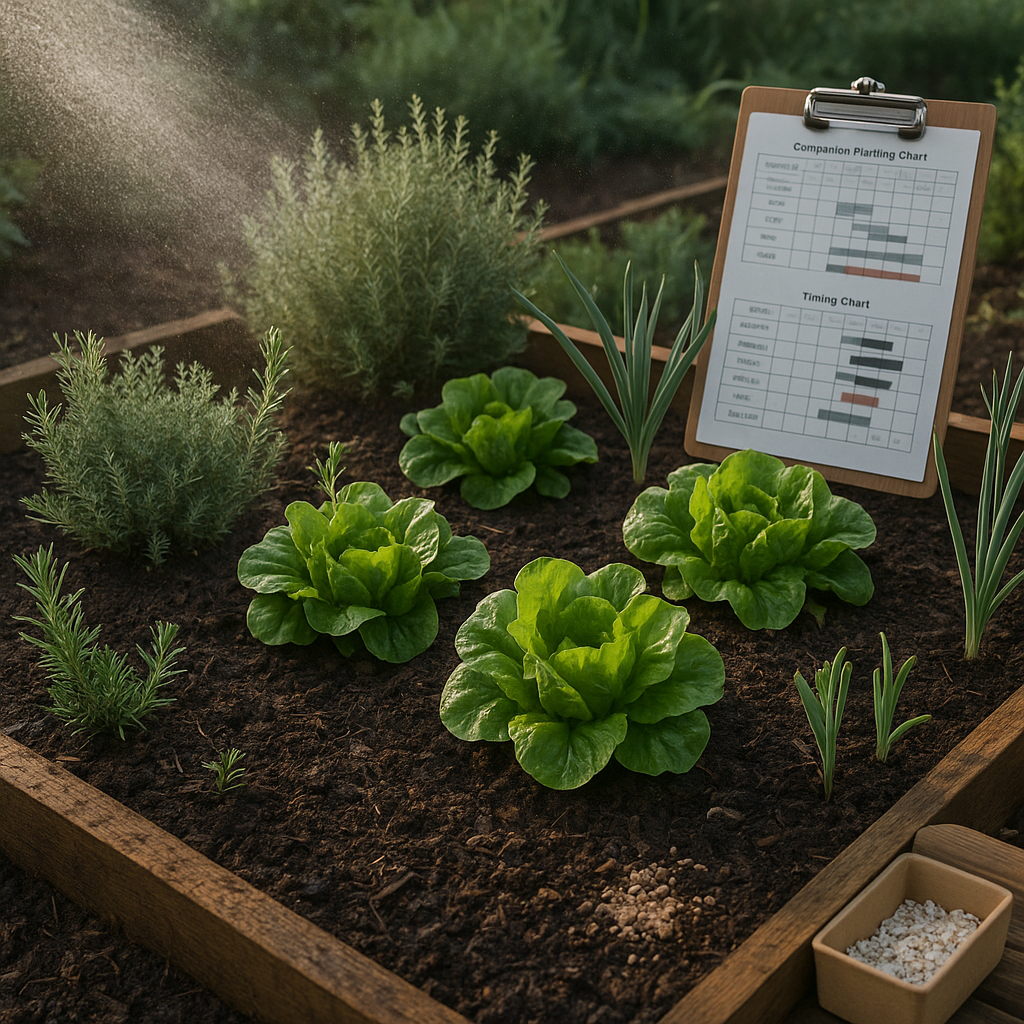
No-dig gardening offers a clear advantage over traditional digging methods when it comes to managing slugs. By leaving the soil undisturbed, no-dig beds avoid exposing buried slug eggs and preserve beneficial organisms—like beetles and centipedes—that prey on slugs. In contrast, turning over soil can inadvertently bring more slugs to the surface and disrupt this natural balance.
Another simple but effective tactic is to water your garden early in the morning rather than in the evening. Wet soil at night creates ideal conditions for slugs to roam and feed, so keeping the environment drier overnight makes your vegetables less appealing to them.
Choosing the right crops and interplanting can also help repel slugs. For example, surround lettuce beds with aromatic herbs such as sage, thyme, or rosemary, or use alliums like garlic and onions as companion plants.
For added protection, consider timing your lettuce sowings to avoid peak slug seasons—generally late spring and early autumn. Starting lettuce earlier or later in the year can reduce exposure to burgeoning slug populations and give your crops a stronger head start.
Regular Monitoring and Quick Action
Regular monitoring is key to keeping lettuce beds healthy and slug-free. Slugs are most active during the cool, damp conditions of early morning and evening, so make a habit of inspecting your lettuce during these times.
Pay close attention to the undersides of leaves, soil surface, and hidden spots where slugs often hide. If you spot any, gently remove them by hand—wear gloves if you prefer—or use a small spoon or chopsticks to dislodge them without damaging your plants. You can drop collected slugs into a container of soapy water for safe disposal.
To get ahead of slug problems, start a simple “slug diary” to note when and where you find them. This will help you spot trends and act faster in the future. Consistency is crucial: the more regularly you check and respond, the easier it becomes to prevent large infestations.
By combining vigilant inspection with quick, gentle removal and basic recordkeeping, you’ll make a big impact on slug control in your garden.
Frequently Asked Questions About Natural Slug Control
Eggshells are often recommended as a natural barrier, but studies show they aren’t very effective at deterring slugs—sharp edges don’t seem to slow them down. Beer traps, another popular method, can attract and drown slugs but may pose a risk to pets who might drink the beer or get stuck themselves. If you use beer traps, place them in areas inaccessible to pets and wildlife.
Rainy weather makes natural control tougher, as barriers like diatomaceous earth quickly lose effectiveness. Try handpicking slugs at dusk or using copper tape, which works even when wet. Some people think coffee grounds help, but research suggests you’d need a strong enough concentration to make a real difference, which isn’t practical for most gardens.
